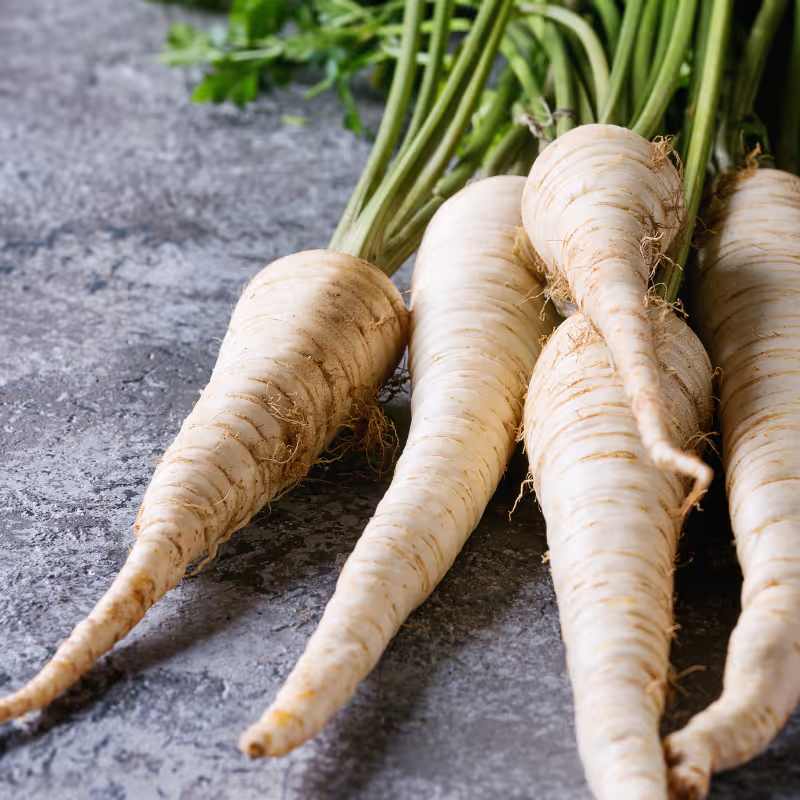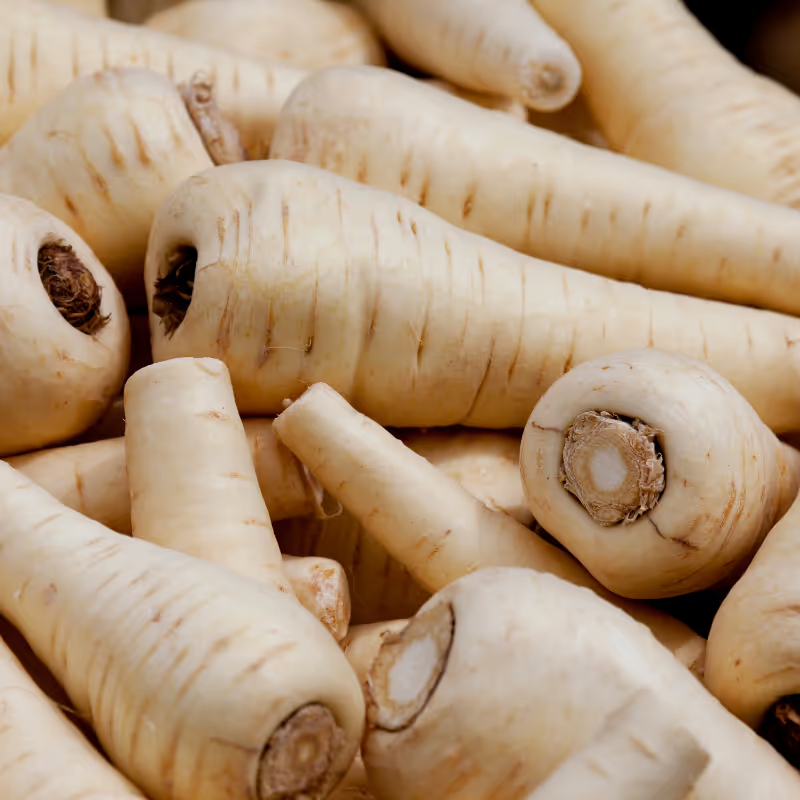What Does it Taste Like?
Parsnips offer a complex flavor profile that's sweet yet nutty, with a subtle hint of spiciness. Their texture is smooth and slightly creamy when cooked, much like a cross between a carrot and a potato. Raw, they have a firm and crunchy bite, but once roasted, boiled, or mashed, they become tender and velvety.
Varieties we grow

Javelin
The Javelin variety of parsnips stands out with its slender, uniform roots and smooth, white skin. Known for its sweet, nutty flavor and tender texture, the Javelin parsnip is a favorite among chefs and home cooks alike. Its consistency and ease of preparation make it an excellent choice for both simple and gourmet dishes.
Why Should I Eat It?
Parsnips are not only delicious but also packed with nutrients. They are an excellent source of dietary fiber, which aids in digestion and helps maintain a healthy weight. Rich in vitamins C and K, parsnips support immune function and bone health. Additionally, they provide essential minerals like potassium and manganese, which are crucial for heart health and metabolic function.
Parsnips

July - December
Imagine biting into a root vegetable that bridges the sweet earthiness of carrots with the comforting starchy texture of potatoes. Enter the parsnip, a humble yet delightful vegetable that often flies under the radar. With its creamy white flesh and delicate flavor, parsnips are a hidden gem in the culinary world, ready to add a unique twist to your favorite dishes.
Recommended Storage
How Do I Store It?
Short Term
Long Term
How Do I Cook It?
